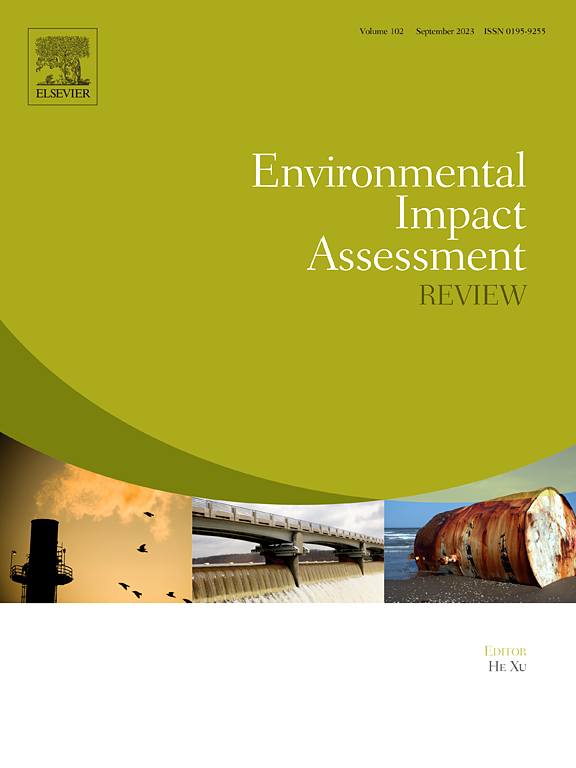减少环境退化的绿色转型倡议:适应、缓解和协同效应
IF 11.2
1区 社会学
Q1 ENVIRONMENTAL STUDIES
引用次数: 0
摘要
绿色转型是缓解环境退化的关键战略,与可持续发展目标7、11和13等联合国可持续发展目标相一致。本研究使用扩展的STIRPAT框架来研究绿色转型变量,即可再生能源转型(RES)、绿色金融(GFC)和绿色技术(GT)的适应、减缓和协同效应。为了克服以CO₂为中心的指标对环境退化的局限性,将生态足迹(EF)和负荷能力因子(LF)指标结合起来。实证分析采用结构化方法,包括异方差稳健性面板单位根检验、长期估计(FMOLS)、不对称效应(MMQR)和稳健性检验(面板EGLS和D-H因果检验)。FMOLS结果表明,RES、GFC和GT创造了一个协同治理框架,放大了它们各自的影响。GFC支持GT的研发和部署,而GT则优化可再生能源项目的性能。可再生能源加速了可再生能源的采用,提高了能源效率,进一步减少了环境退化。MMQR结果显示,RES在所有分位数中都能持续降低EF并增加LF,突出了其缓解退化的关键作用。GFC在不同分位数表现出不同的影响,而GT在中低分位数对LF有显著的正向影响,在高分位数对EF有显著的降低作用。然而,与RES和GFC相比,其对LF和EF的影响都不那么明显。在此从六国集团国家获得的见解为金砖国家等新兴经济体制定适应和缓解战略提供了宝贵指导,以便在社会经济发展和生态阈值之间进行权衡。本文章由计算机程序翻译,如有差异,请以英文原文为准。
Green transition initiatives to reduce environmental degradation: Adaptation, mitigation and synergistic effects
Green transitions are crucial strategies for mitigating environmental degradation and are aligned with the Sustainable Development Goals (SDGs) of the United Nations such as SDG 7, SDG 11 and SDG 13. This study used an expanded STIRPAT framework to investigate the adaptation, mitigation, and synergistic effects of green transition variables, namely, Renewable Energy Transition (RES), Green Finance (GFC) and Green Technology (GT). Ecological Footprint (EF) and Load Capacity Factor (LF) indicators were integrated to overcome the limitations of CO₂-centric indicators towards environmental degradation. Empirical analysis employs structured methods, including heteroskedasticity-robust panel unit root tests, long-run estimation (FMOLS), asymmetric effects (MMQR), and robustness checks (panel EGLS and D-H causality tests). The FMOLS results indicate that RES, GFC and GT create a synergistic governance framework that amplifies their individual impacts. GFC supports the R&D and deployment of GT, while GT optimizes the performance of RES projects. RES accelerates the adoption of renewables, enhancing energy efficiency and further reducing environmental degradation. MMQR results show that RES consistently reduces EF and increases LF across all quantiles, highlighting its key role in mitigating degradation. GFC exhibits varied effects across quantiles, while GT has significant positive effects on LF in lower to middle quantiles and reduces EF in higher quantiles. However, its impact on both LF and EF is less pronounced compared to that of RES and GFC. The insights gained here from the G-6 countries serve as a valuable guide or emerging economies, such as those of the BRICS, in developing adaptation and mitigation strategies to navigate the trade-offs between socio-economic developments and ecological thresholds.
求助全文
通过发布文献求助,成功后即可免费获取论文全文。
去求助
来源期刊

Environmental Impact Assessment Review
ENVIRONMENTAL STUDIES-
CiteScore
12.60
自引率
10.10%
发文量
200
审稿时长
33 days
期刊介绍:
Environmental Impact Assessment Review is an interdisciplinary journal that serves a global audience of practitioners, policymakers, and academics involved in assessing the environmental impact of policies, projects, processes, and products. The journal focuses on innovative theory and practice in environmental impact assessment (EIA). Papers are expected to present innovative ideas, be topical, and coherent. The journal emphasizes concepts, methods, techniques, approaches, and systems related to EIA theory and practice.
 求助内容:
求助内容: 应助结果提醒方式:
应助结果提醒方式:


